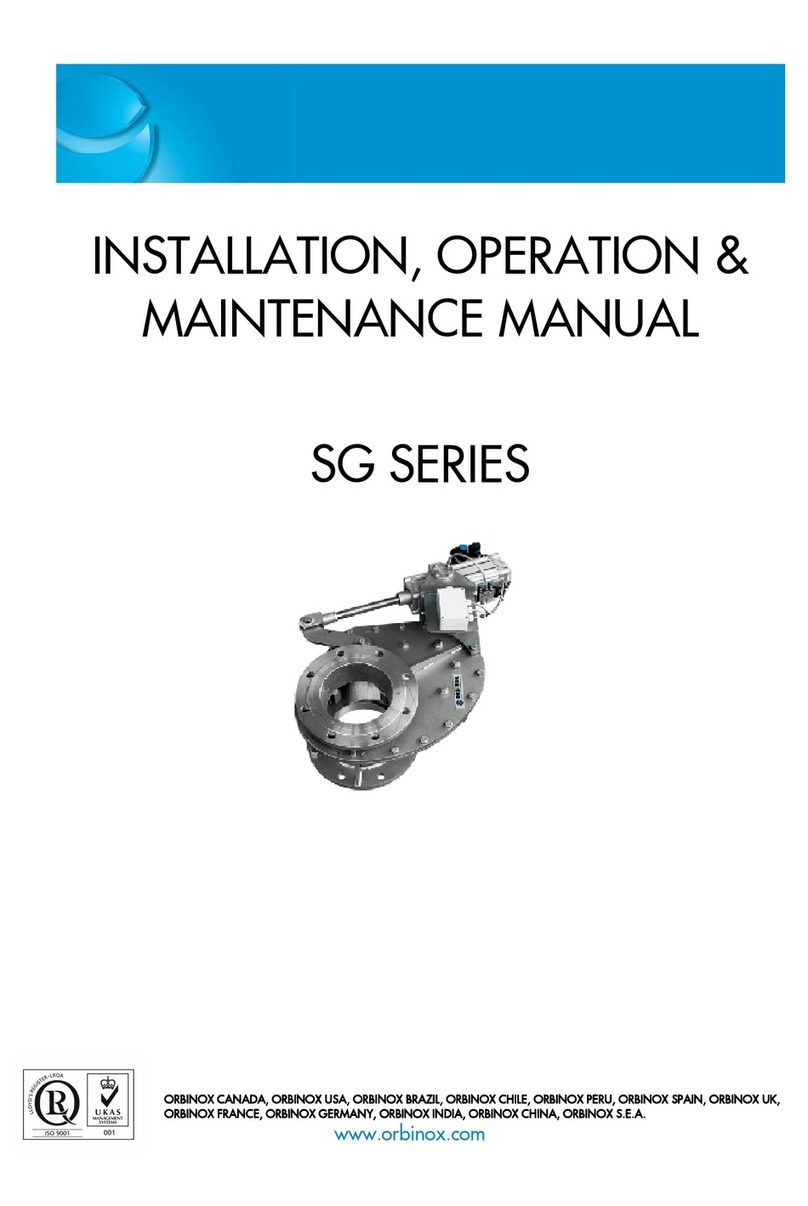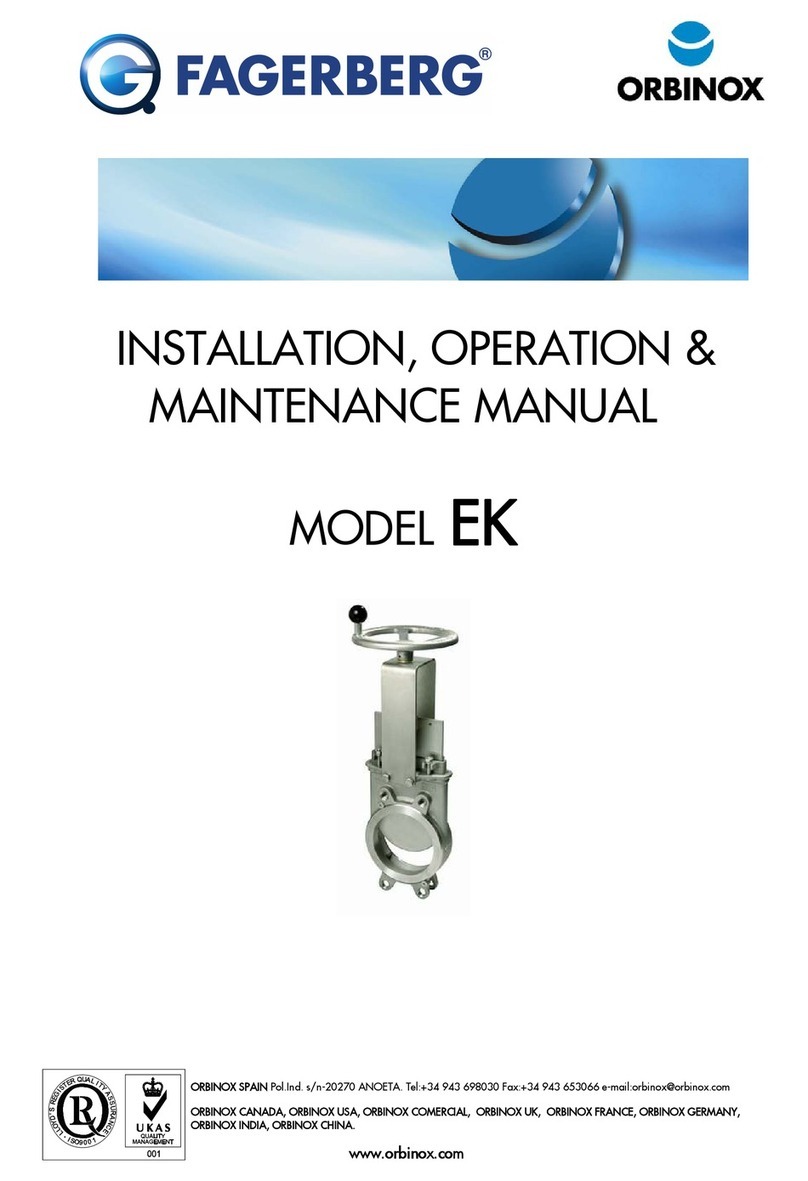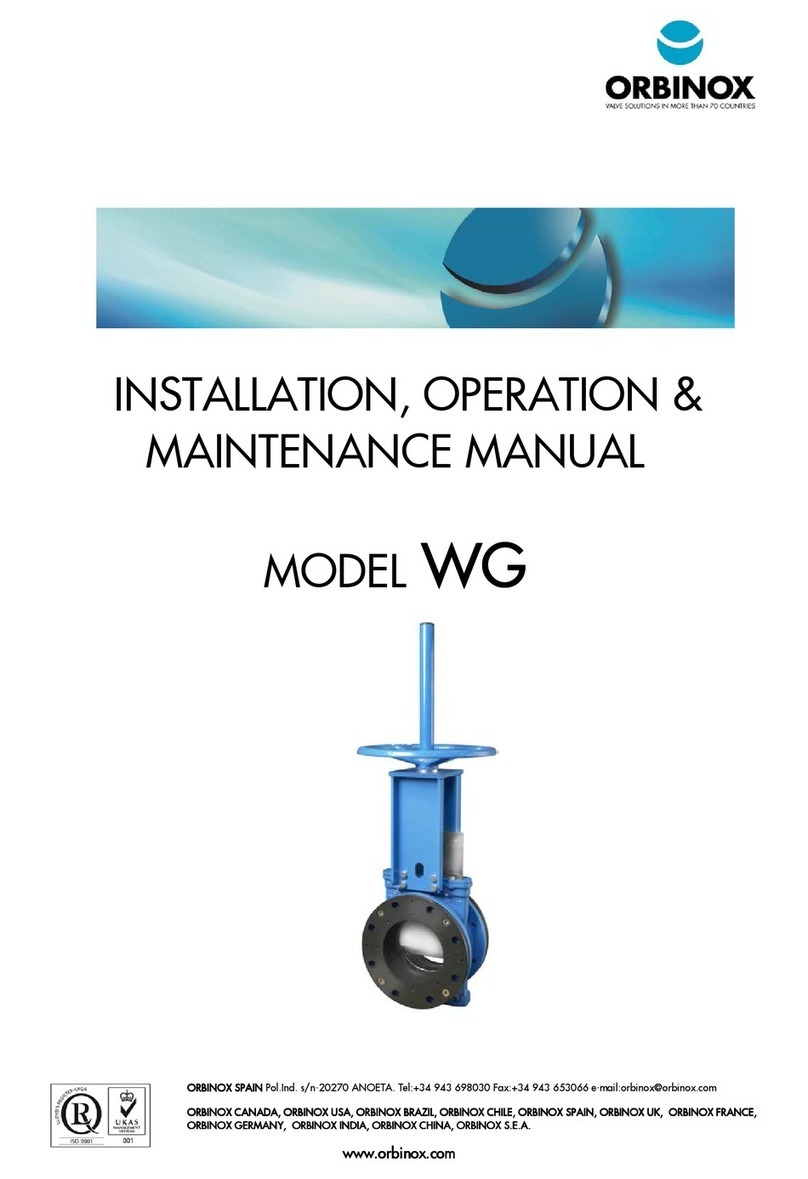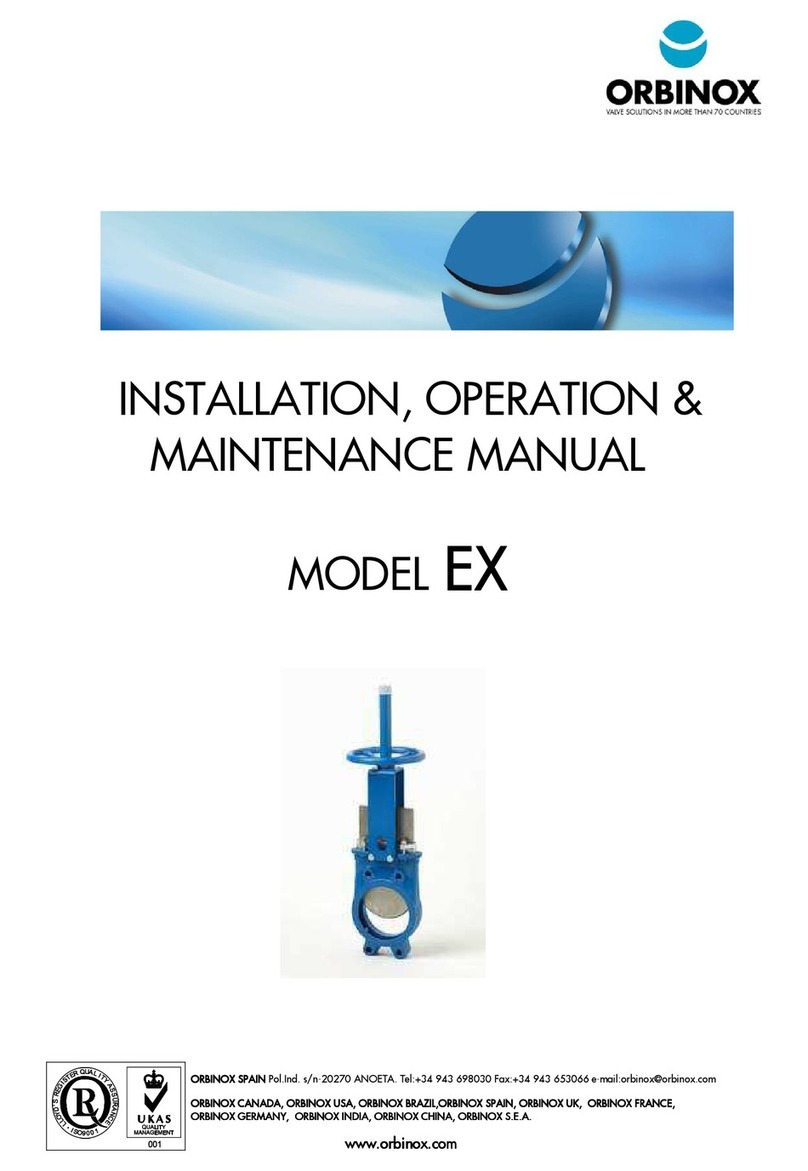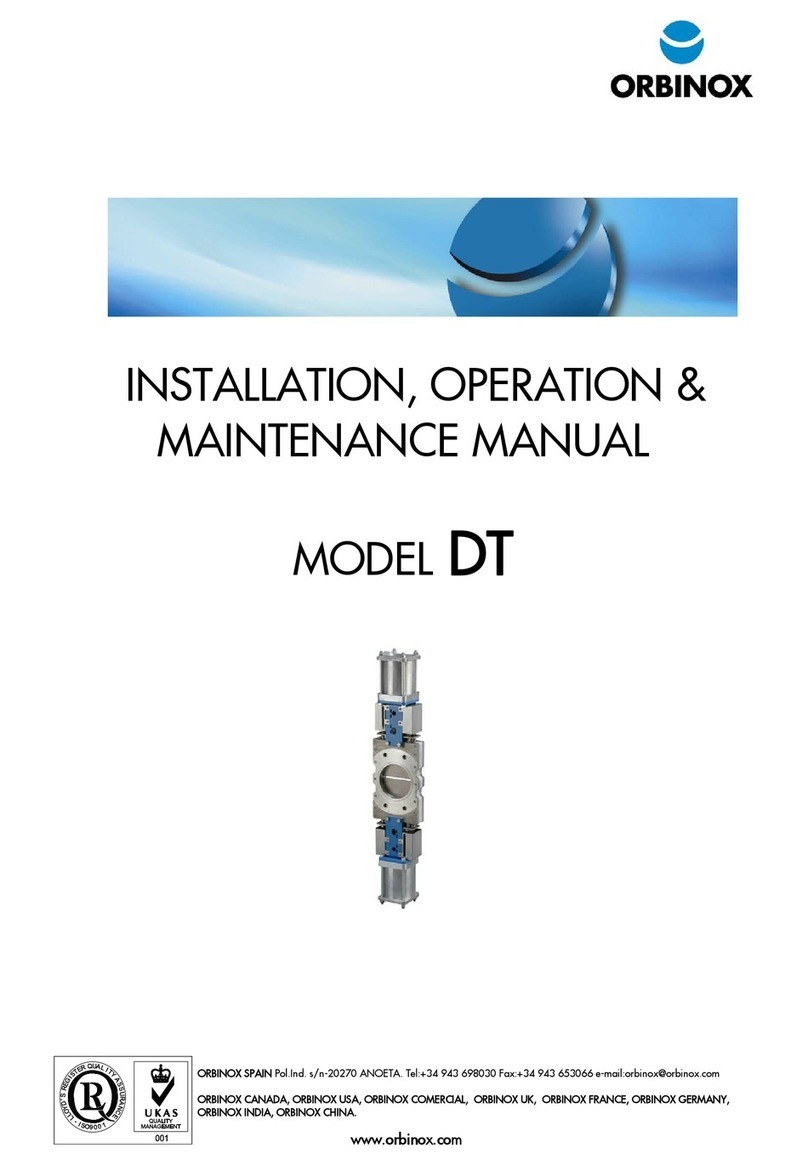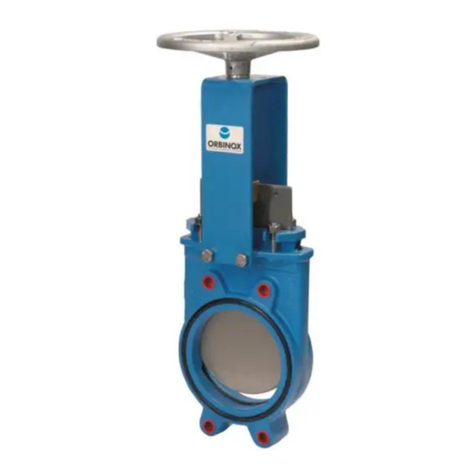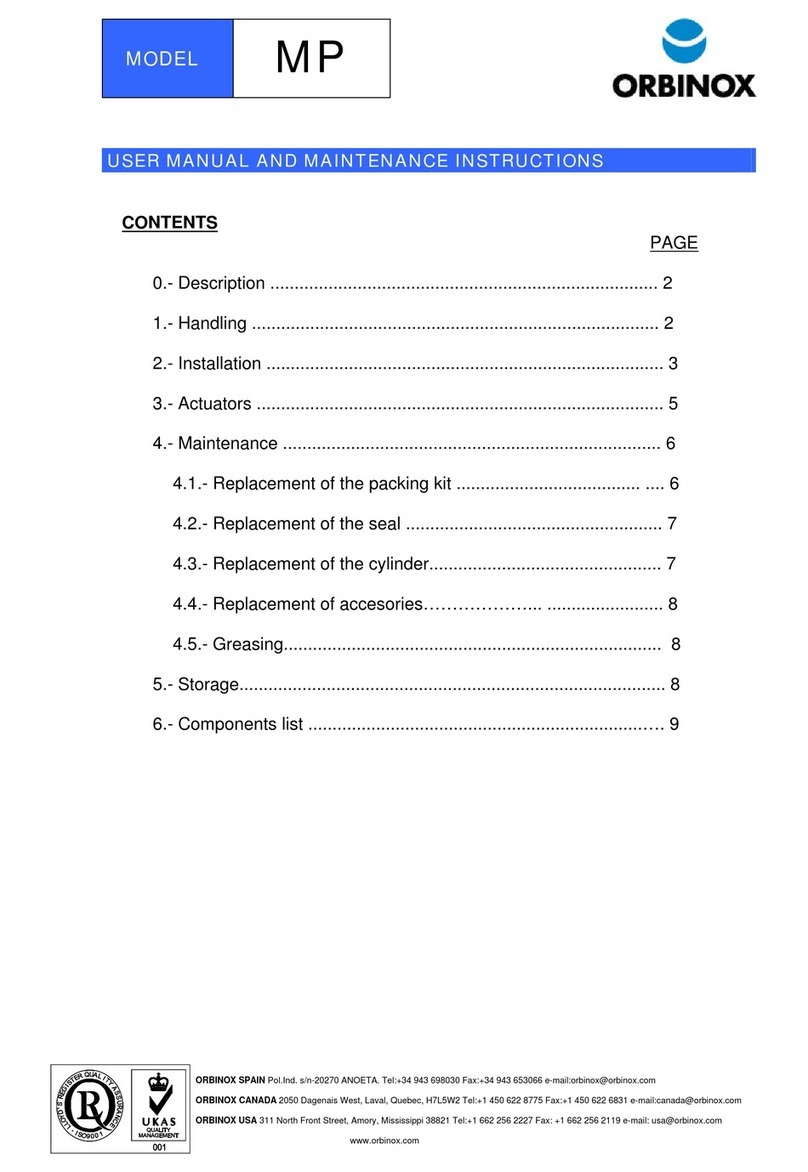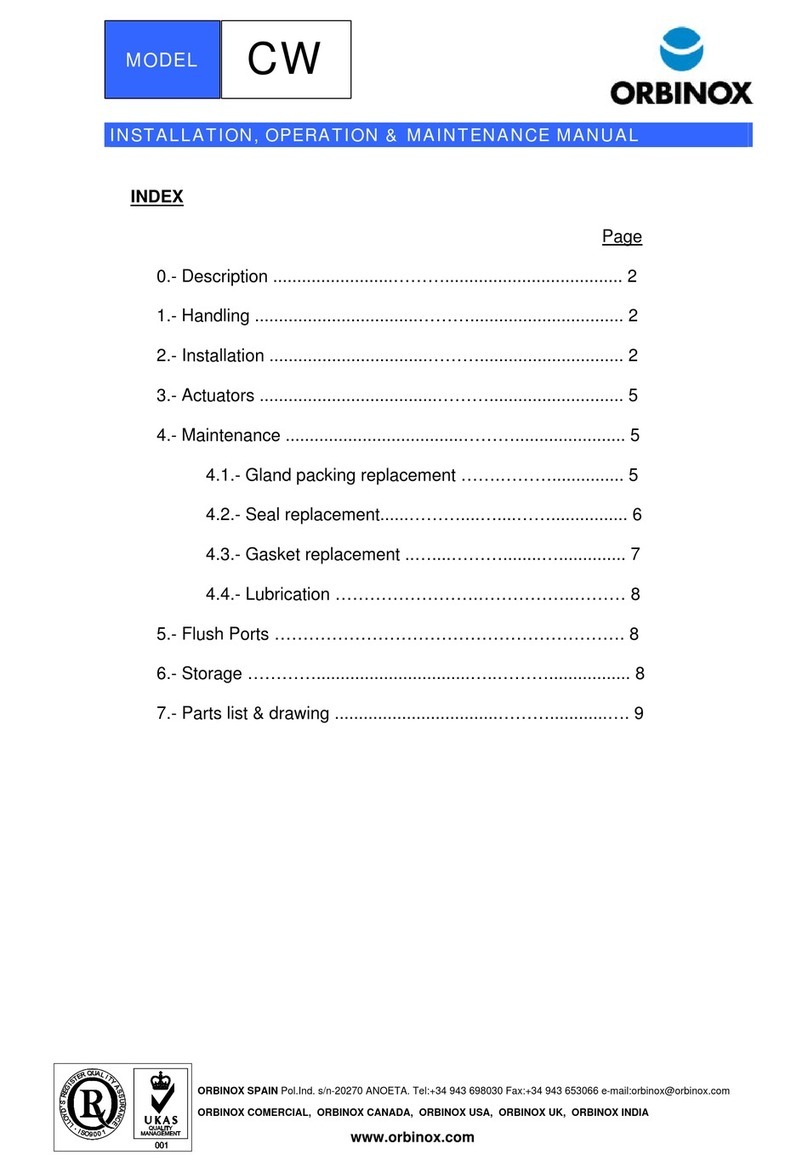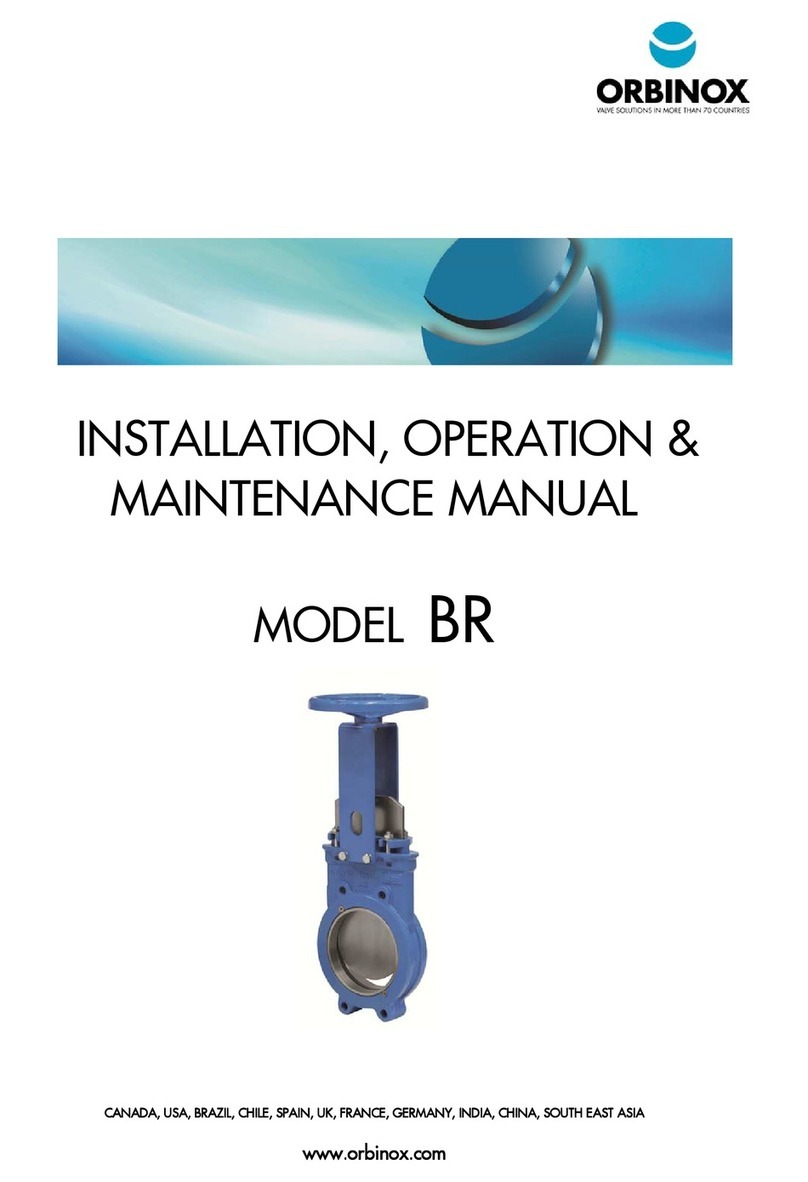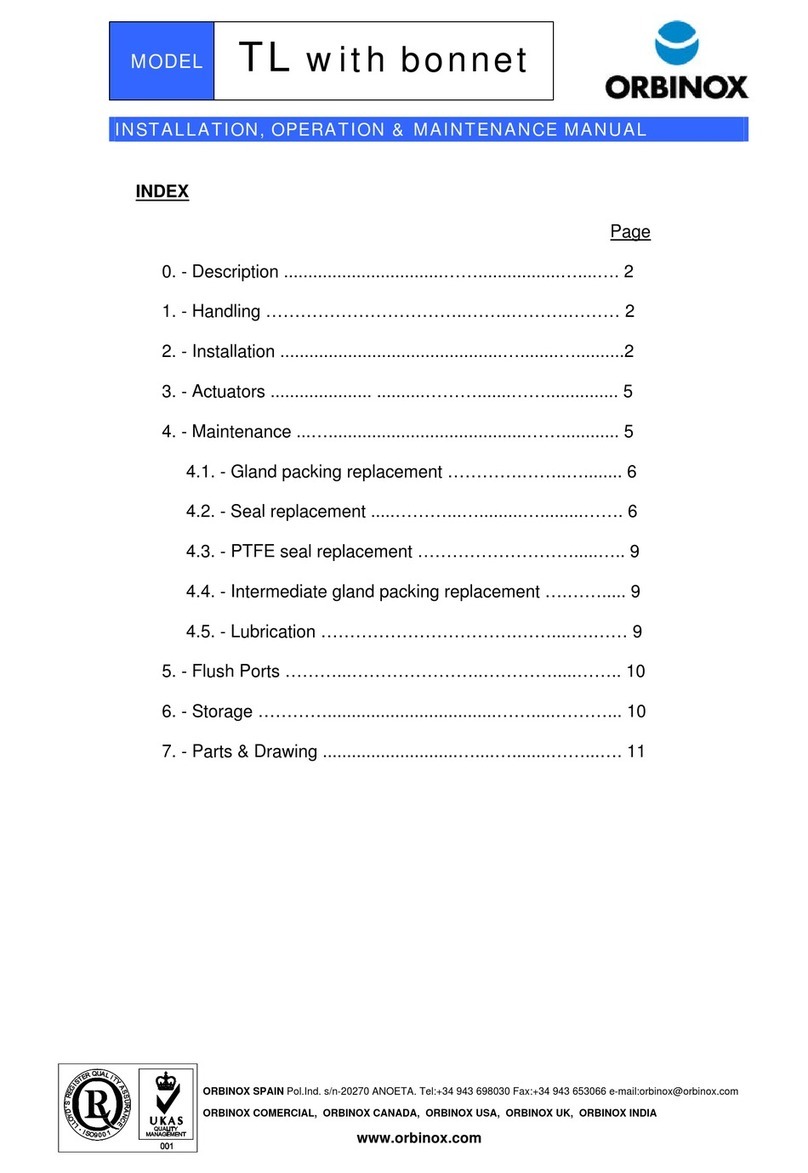TK
3.4.- Electric actuator
Depending on the type or make of the electric actuator, specific instructions (i.e. a manufacturer’s
manual) will be supplied.
oAllowed actuators for ATEX zones: Hand wheel, Chain Wheel, Bevel Gear, Lever,
Pneumatic Actuator (double acting ONLY
ONLYONLY
ONLY) and Electric Motor
oMake sure these actuators are ATEX marked according to the requested zone.
oMaximum travel speed of the gate must equal or below 0,05 m/s
4.- MAINTENANCE
The valve must not undergo any modifications without a previous agreement with ORBINOX.
ORBINOX shall not be liable for any damages that may arise due to the use of non original parts or
components
To avoid personal injury or damage to property from the release of process fluid:
oThose in charge of handling and maintenance of the valve must be qualified and trained in
valve operations.
oUse appropriate personal protection equipment (gloves, safety shoes, etc).
oShut off all operating lines to the valve and place a warning sign.
oIsolate the valve completely from the process.
oRelease process pressure.
oDrain the process fluid from the valve.
oAccording to
EN 13463
EN 13463EN 13463
EN 13463-
--
-1 (15),
1 (15), 1 (15),
1 (15), during installation and maintenance operations, use hand
tools
(non electric)
(non electric) (non electric)
(non electric) with Working Allowance.
The only maintenance required is to change the gland packing (6) or the seal (4).
The life of these elements will depend on the working conditions of the valve such as: pressure,
temperature, abrasion, chemical action, number of operations, etc.
4.1.
4.1. 4.1.
4.1. -
--
-
Rep
RepRep
Replacement of the gland packing (6
lacement of the gland packing (6lacement of the gland packing (6
lacement of the gland packing (6):
):):
):
1. Depressurise the circuit and place the valve in close position.
2. Remove the gate guards (for automatically actuated valves only).
3. Non rising stem. Photo 1: Release the stem nut (8) from the gate (3).
Rising stem valves. Photo 2: Release the spindle or stem (9) from the gate (3).
4. Loosen the screws of the yoke (10) and remove it (without loosing the actuator).
5. Loosen the nuts of the gland followers (7) and remove them. (Photo 3)
6. Remove the old packing rings (6) and clean the stuffing boxes.
7. Insert the new packing rings (6), making sure that the ring joints alternate (the first on one side
of the gate, the next on the other and so on).
8. Once the necessary packing rings (6) have been inserted, proceed with a steady initial
tightening of the gland followers (7). (Photo 3)
9. Place the yoke (10) (with the actuator) and screw it.
10. ix the stem nut (8) to the gate. (Non rising stem. Photo 1) or fix the stem (9) or the spindle to
the gate (3) (Rising stem valves. Photo 2).
11. Remount the gate guards.
12. Carry out some operations with a loaded circuit and then re-tighten the gland followers (7)
to prevent leakage.
